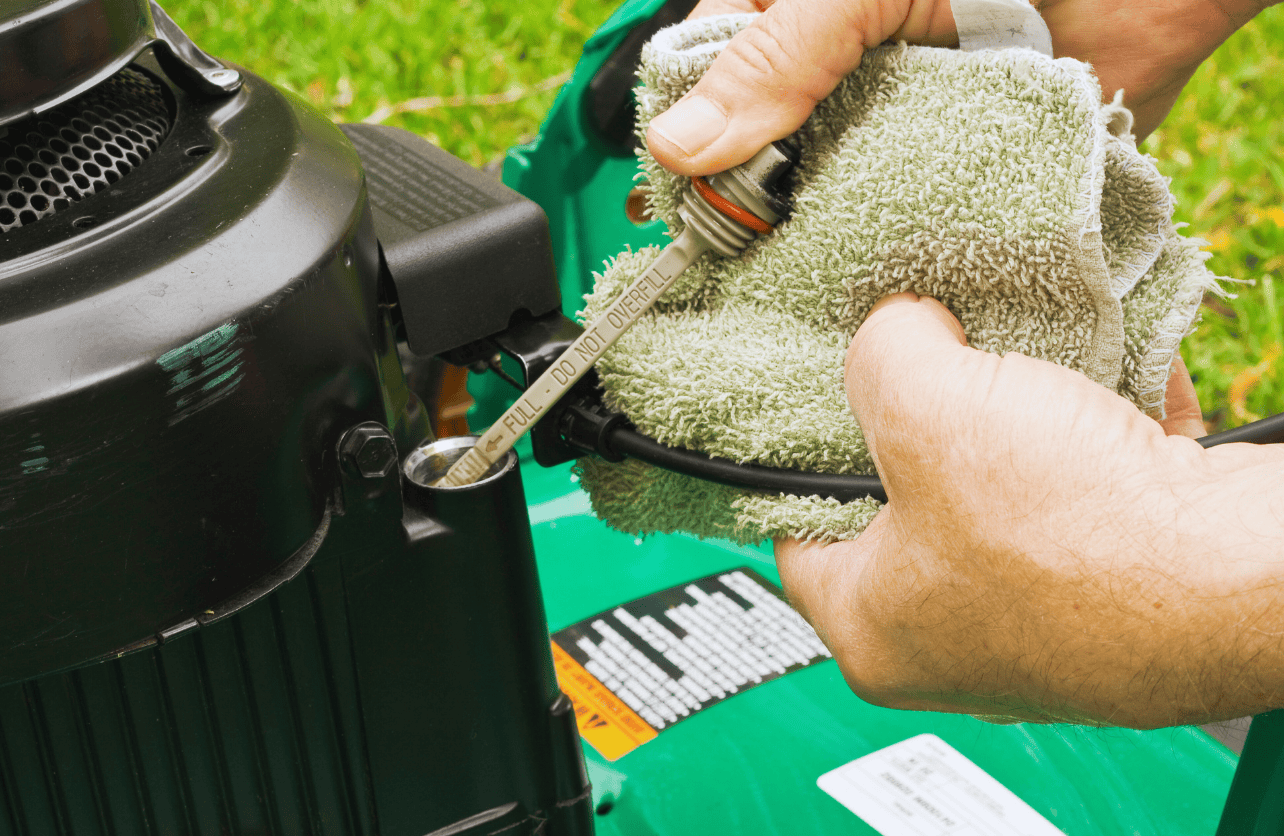Lawn Mower Oil Maintenance: How Often Should You Change It?

Keeping your lawn mower in top shape is essential for maintaining a lush, green lawn. One of the most crucial aspects of lawn mower maintenance is managing the engine oil. Just like your car, your lawn mower’s engine relies on clean oil to function efficiently and last longer. But how often should you change your lawn mower oil? Let’s dive into everything you need to know about lawn mower oil maintenance to keep your mower running smoothly season after season.
Why is Oil Maintenance Important?
Engine oil serves several vital functions in your lawn mower:
- Lubrication: Reduces friction between moving parts, preventing wear and tear.
- Cooling: Helps dissipate heat generated during engine operation.
- Cleaning: Carries away dirt, debris, and metal particles, keeping the engine clean.
- Protection: Shields engine components from corrosion and damage.
Neglecting oil maintenance can lead to poor engine performance, increased fuel consumption, and even engine failure. Regular oil changes are a simple yet effective way to extend the life of your lawn mower and ensure it operates efficiently.
How Often Should You Change Your Lawn Mower Oil?
The frequency of oil changes depends on several factors, including the type of lawn mower, usage, and manufacturer recommendations. Here are some general guidelines:
1. Manufacturer’s Recommendations
Always start by checking your lawn mower’s owner’s manual. Manufacturers provide specific guidelines based on the engine type and design. Typically, the recommended oil change interval is:
- Gas-Powered Lawn Mowers: Every 25-50 hours of use or at the start of each mowing season.
- Electric Lawn Mowers: Generally don’t require oil changes, but if your model has a small engine or internal components that use oil, refer to the manual.
2. Usage Frequency
How often you use your lawn mower significantly impacts oil maintenance:
- Frequent Use: If you mow your lawn regularly throughout the mowing season, consider changing the oil more frequently, around every 25 hours of operation.
- Infrequent Use: For occasional use, an oil change at the beginning and end of the mowing season is usually sufficient.
3. Engine Type
Different engines have varying oil change requirements:
- 4-Stroke Engines: These engines typically require more frequent oil changes due to their design and the way they handle lubrication.
- 2-Stroke Engines: Often have oil mixed with fuel, so separate oil changes might not be necessary. However, some modern 2-stroke engines do have separate oil reservoirs that require regular maintenance.
4. Operating Conditions
Environmental factors can affect how quickly oil degrades:
- Dusty or Dirty Environments: Mowing in dusty areas can cause the oil to become contaminated faster, necessitating more frequent changes.
- Extreme Temperatures: Operating in very hot or cold conditions can impact oil performance and longevity.
Signs It’s Time to Change Your Lawn Mower Oil

Even if you follow a regular maintenance schedule, certain signs indicate that your lawn mower needs an oil change:
Dark or Dirty Oil
Fresh oil is typically light amber and clear. If the oil has turned dark or appears gritty, it’s time for a change.
Engine Noise
Unusual noises like knocking or grinding can signal that the oil isn’t adequately lubricating the engine components.
Reduced Performance
If your lawn mower starts to lose power or doesn’t run as smoothly, dirty oil could be the culprit.
Frequent Starting Issues
Difficulty starting your mower or inconsistent running can be related to poor oil quality affecting engine performance.
How to Change Your Lawn Mower Oil
Changing your lawn mower oil is a straightforward process. Here’s a step-by-step guide:
What You’ll Need:
- Appropriate engine oil (check your manual for specifications)
- Oil drain pan
- Funnel
- Wrench or socket set (if needed)
- Gloves and rags
Steps:
- Warm Up the Engine:
- Run your lawn mower for a few minutes to warm up the oil. Warm oil drains more easily and thoroughly.
- Turn Off and Disconnect:
- Turn off the engine and disconnect the spark plug wire to ensure safety.
- Locate the Oil Drain Plug:
- Find the oil drain plug underneath the mower. If your mower doesn’t have a drain plug, you might need to remove the oil fill cap to allow the oil to drain out.
- Drain the Old Oil:
- Place the oil drain pan beneath the drain plug.
- Remove the drain plug and let the old oil flow into the pan completely. If there’s no drain plug, tilt the mower gently to pour out the oil.
- Replace the Drain Plug:
- Once the oil has drained, replace and tighten the drain plug securely.
- Refill with Fresh Oil:
- Using a funnel, pour the recommended amount and type of fresh oil into the oil fill hole. Avoid overfilling.
- Check the Oil Level:
- After refilling, use the dipstick (if available) to check the oil level. Add more oil if necessary.
- Reconnect the Spark Plug:
- Reattach the spark plug wire and ensure everything is secure.
- Dispose of Old Oil Properly:
- Pour the used oil into a sealed container and take it to a recycling center or auto shop for proper disposal. Never pour oil down the drain or onto the ground.
Tips for Maintaining Your Lawn Mower’s Oil
- Regular Checks: Periodically check the oil level, especially before and after the mowing season.
- Use the Right Oil: Always use the type and grade of oil specified in your mower’s manual.
- Keep It Clean: Ensure your lawn mower is clean and free from debris to prevent contamination of the oil.
- Store Properly: If storing your mower for an extended period, change the oil before storage to prevent moisture buildup and corrosion.
Conclusion
Proper oil maintenance is essential for keeping your lawn mower running smoothly and extending its lifespan. By knowing how often to change your lawn mower oil and recognizing the signs that indicate an oil change is needed, you can ensure your mower performs efficiently every time you use it. Regular oil changes, coupled with other maintenance practices, will keep your lawn looking its best without unnecessary engine hiccups. So, next time you gear up for mowing season, remember that a simple oil change can make a world of difference in your mower’s performance and longevity.